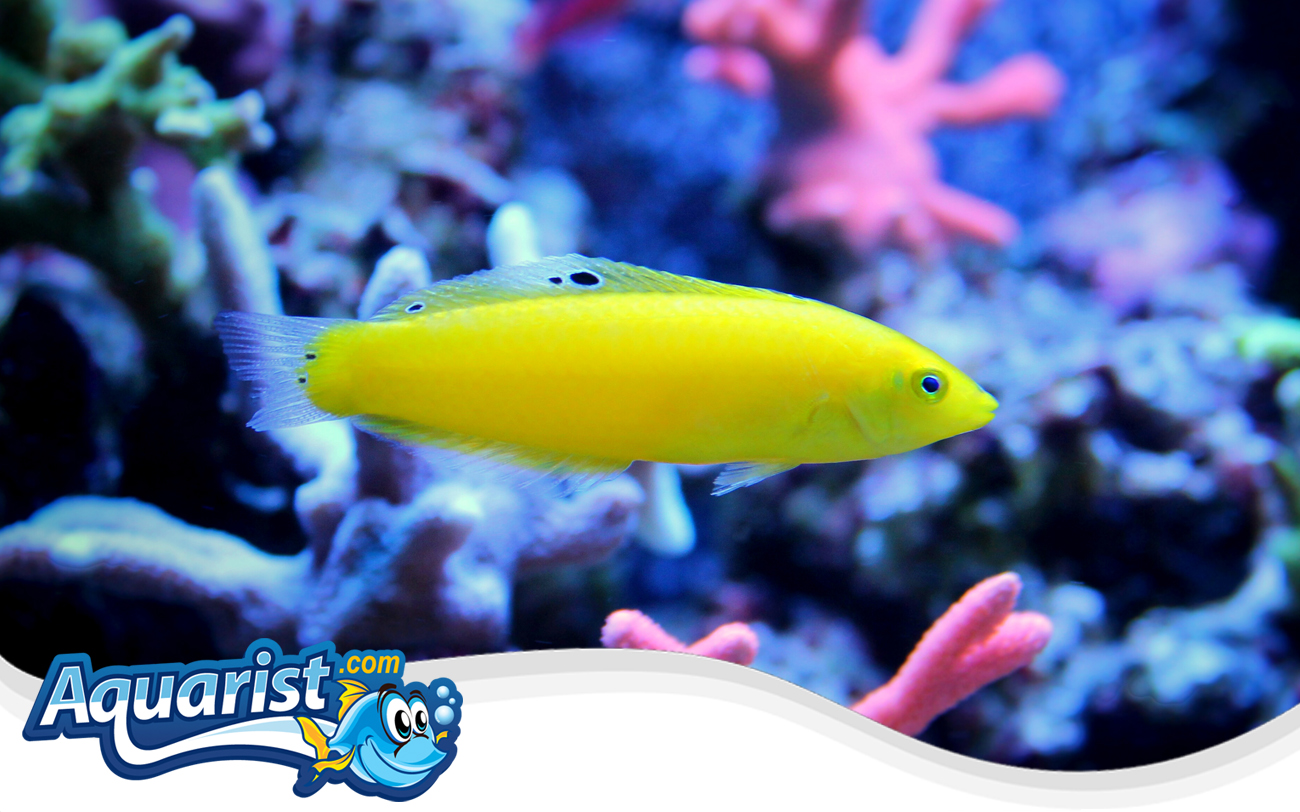Overview
- Native to the Indo-Pacific, commonly found in coral reefs and sandy lagoons.
- Recognized for its vibrant yellow body, making it a visually striking addition to aquariums.
- A highly active swimmer, constantly foraging along the substrate and reef structures.
- Juveniles and adults maintain their bright yellow coloration, though slight fading can occur with age.
- Often used in reef tanks to control pests like flatworms and bristle worms.
Feeding
- Carnivorous diet, primarily feeding on small crustaceans, worms, and mollusks.
- Readily consumes frozen and live foods such as mysis shrimp, brine shrimp, and chopped seafood.
- Can be trained to eat high-quality marine pellets and flake foods.
- Requires multiple small meals throughout the day to support its high activity levels.
- Thrives in tanks with a sandbed, where it can naturally forage for hidden prey.
Habitat
- Typically found in coral reef slopes, lagoons, and sandy coastal areas.
- Requires an aquarium with open swimming space and a soft sand substrate for burrowing.
- Best kept in tanks with rockwork for shelter and hiding spots.
- Moderate water flow and well-oxygenated water support its natural behavior.
- A minimum tank size of 50 gallons is recommended to accommodate its active nature.
Fish Care
- Optimal water temperature: 74-80°F (23-27°C).
- Ideal pH range: 8.1-8.4, with a specific gravity of 1.023-1.026.
- Requires stable water conditions and a well-maintained aquarium.
- Can be sensitive to sudden fluctuations in salinity or temperature.
- Regular sandbed maintenance is important, as it burrows at night for protection.
Compatibility
- Generally peaceful but may exhibit territorial behavior towards smaller wrasses.
- Compatible with other peaceful reef fish such as clownfish, gobies, and tangs.
- Should not be housed with overly aggressive species that may intimidate it.
- Completely reef-safe with corals but may consume small ornamental invertebrates.
- Does well in a community setting but may become dominant in smaller aquariums.
Aquarium Behavior
- Highly active swimmer, frequently seen darting in and out of rock structures.
- Often forages by picking at sand and rock surfaces for small invertebrates.
- Burrows in the sand at night for protection, emerging at dawn.
- Displays curiosity towards new tank additions and environmental changes.
- Thrives in tanks that mimic its natural reef habitat with ample space to explore.


